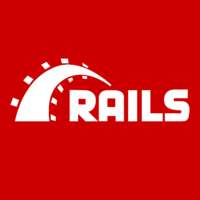Back in 2014, I was given an opportunity to re-architect SmartZip Analytics platform, and flagship product: SmartTargeting. This is a SaaS software helping real estate professionals keeping up with their prospects and leads in a given neighborhood/territory, finding out (thanks to predictive analytics) who's the most likely to list/sell their home, and running cross-channel marketing automation against them: direct mail, online ads, email... The company also does provide Data APIs to Enterprise customers.
I had inherited years and years of technical debt and I knew things had to change radically. The first enabler to this was to make use of the cloud and go with AWS, so we would stop re-inventing the wheel, and build around managed/scalable services.
For the SaaS product, we kept on working with Rails as this was what my team had the most knowledge in. We've however broken up the monolith and decoupled the front-end application from the backend thanks to the use of Rails API so we'd get independently scalable micro-services from now on.
Our various applications could now be deployed using AWS Elastic Beanstalk so we wouldn't waste any more efforts writing time-consuming Capistrano deployment scripts for instance. Combined with Docker so our application would run within its own container, independently from the underlying host configuration.
Storage-wise, we went with Amazon S3 and ditched any pre-existing local or network storage people used to deal with in our legacy systems. On the database side: Amazon RDS / MySQL initially. Ultimately migrated to Amazon RDS for Aurora / MySQL when it got released. Once again, here you need a managed service your cloud provider handles for you.
Future improvements / technology decisions included:
Caching: Amazon ElastiCache / Memcached CDN: Amazon CloudFront Systems Integration: Segment / Zapier Data-warehousing: Amazon Redshift BI: Amazon Quicksight / Superset Search: Elasticsearch / Amazon Elasticsearch Service / Algolia Monitoring: New Relic
As our usage grows, patterns changed, and/or our business needs evolved, my role as Engineering Manager then Director of Engineering was also to ensure my team kept on learning and innovating, while delivering on business value.
One of these innovations was to get ourselves into Serverless : Adopting AWS Lambda was a big step forward. At the time, only available for Node.js (Not Ruby ) but a great way to handle cost efficiency, unpredictable traffic, sudden bursts of traffic... Ultimately you want the whole chain of services involved in a call to be serverless, and that's when we've started leveraging Amazon DynamoDB on these projects so they'd be fully scalable.





